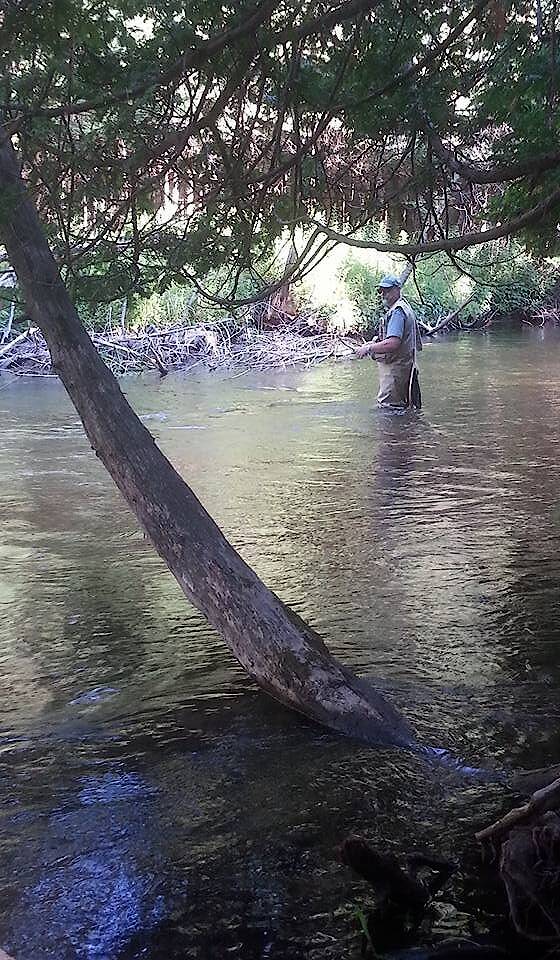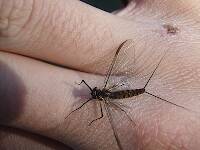
Blue-winged Olives
Baetis
Tiny Baetis mayflies are perhaps the most commonly encountered and imitated by anglers on all American trout streams due to their great abundance, widespread distribution, and trout-friendly emergence habits.
Featured on the forum

This species was fairly abundant in a February sample of the upper Yakima.

Troutnut is a project started in 2003 by salmonid ecologist Jason "Troutnut" Neuswanger to help anglers and
fly tyers unabashedly embrace the entomological side of the sport. Learn more about Troutnut or
support the project for an enhanced experience here.
TimCat on Sep 3, 2015September 3rd, 2015, 10:31 am EDT
Hey all, I figured I'd share this. Could be useful if not interesting to go through. Unfortunately the library is only updated until 2005, but the searchable database is great! It dates back to 1930 and has a wide array of studies and reports conducted by the DNR and other organizations (mainly U of M from what I've noticed so far).
http://www.michigan.gov/dnr/0,4570,7-153-10364_52259_19056---,00.html
http://www.michigan.gov/dnr/0,4570,7-153-10364_52259_19056---,00.html
"If I'm not going to catch anything, then I 'd rather not catch anything on flies" - Bob Lawless
PaulRoberts on Sep 3, 2015September 3rd, 2015, 2:16 pm EDT
Wow! Wish every state had such a database.
Jmd123 on Sep 3, 2015September 3rd, 2015, 2:45 pm EDT
Tim, I've dipped into this on occasion, and there are some very nice reports on lakes and rivers. Yep, our DNR does a good job of making these publications available to the public.
Jonathon
Jonathon
No matter how big the one you just caught is, there's always a bigger one out there somewhere...
Roguerat on Sep 3, 2015September 3rd, 2015, 3:58 pm EDT
I've also done some searching through these archives, it takes some digging but it's worth it.
Another good resource is to Google 'macroinvertebrate study of (enter stream of choice) and see what comes up. My college daughter did a couple field trips during a biology class and told me about it; I've done print-outs of a fair number of MI trout streams and the information is all to genus, and in some cases, species level- trout, mayflies, caddis, stoneflies, its all in there. The test station locations are also given and I've tied flies based on this data.
Roguerat
'Less is more...'
Ludwig Mies Vande Rohe
Another good resource is to Google 'macroinvertebrate study of (enter stream of choice) and see what comes up. My college daughter did a couple field trips during a biology class and told me about it; I've done print-outs of a fair number of MI trout streams and the information is all to genus, and in some cases, species level- trout, mayflies, caddis, stoneflies, its all in there. The test station locations are also given and I've tied flies based on this data.
Roguerat
'Less is more...'
Ludwig Mies Vande Rohe
PaulRoberts on Sep 4, 2015September 4th, 2015, 6:24 am EDT
We're SO spoiled. And that's a good thing.
Quick Reply
Related Discussions
Topic
Replies
Last Reply
6
Mar 15, 2008
by Creno
by Creno
Re: First trout fishing in my new home - not a major success, but a minor one!
In Fishing Reports by Jmd123
In Fishing Reports by Jmd123
3
Jun 14, 2011
by Drew
by Drew
Re: Bug fixed: You can now add pictures to posts in the "Fishing Reports" section
In General Discussion by Troutnut
In General Discussion by Troutnut
3
Mar 21, 2012
by Troutnut
by Troutnut






